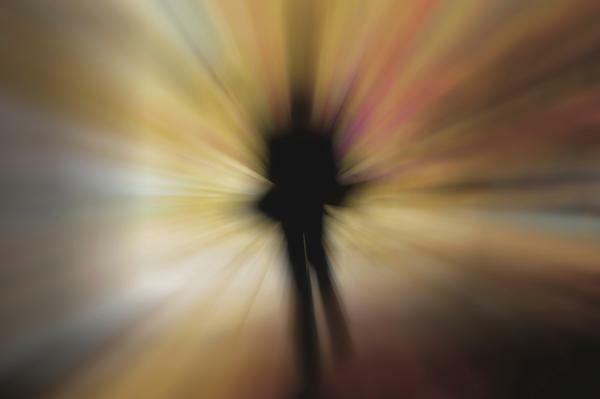
An absence seizure, formerly called small seizures, causes a short period of time in which the person appears gone or as if they have gone blank. Like other types of seizures, absence seizures are caused by brief abnormal electrical activity in the brain.
An absence seizure is a generalized-onset seizure, which means that it begins on both sides of the brain at the same time. It usually only affects the person's awareness of what is happening at that moment with immediate subsequent recovery. In this Psychology-Online article, we explain the symptoms and consequences of absence seizures in adults.
Index
- Types of absence seizures in adults and the elderly
- Symptoms of an absence crisis in the elderly
- Consequences of an absence crisis
- Diagnosis of absence crisis in adults
Types of absence seizures in adults and the elderly.
There are two types of absence seizures in adults and the elderly that present certain differences from each other. Both types of seizures are
Typical absence seizures
- They are the most common
- The person suddenly stops the activity they are doing. It is as if your mind is somewhere else or as if it goes blank
- The eyes look up and there is a continuous blinking
- The crisis usually lasts approximately less than 10 seconds
Atypical absence seizures
- These crises are called atypical because they are usually more durable, have a longer or slower start and end and include different symptoms
- The crisis also begins as if the person has been left blank or is in another world
- There is usually a change in muscle tone and movement.
- The person can be seen performing the following behaviors:
- Blinking over and over again, it may even seem like a fluttering of the eyelids
- Lip smacking or chewing motions
- Rub your fingers together or make other movements with your hands
- An atypical seizure lasts longer than a typical seizure, up to 20 seconds or more

Symptoms of an absence crisis in the elderly.
The easiest way to detect an absence crisis is to blank stare that lasts a few seconds. People who are having an absence crisis do not speak, hear, or seem to understand anything around them. They do not generally fall to the floor, they could be walking around the room, writing an email while having the crisis. Then all of a sudden they come out of themselves and continue as if nothing had happened.
Other symptoms of absence seizures can be:
- Being very restless
- Lip smacking or mouth chewing
- Fluttering eyelids
- Stop activity suddenly and take it back after the crisis
- If you experience sudden movements, it may be an indication that another type of seizure is taking place along with the absence, for example, an epileptic seizure.
Consequences of an absence crisis.
Absence seizures usually last between 10 and 15 seconds. When an absence crisis ends, the person usually continues with what she was doing before crisis, you have the ability to think clearly and focus again on the task without trouble. Usually, the crisis is not remembered while it is the people around him who notice.
When a person has many seizures throughout the day from time to time, she may seem confused or lose track of what she was doing, thus interfering with her day to day life.
Even though this disorder of consciousness occurs in the brain, does not cause brain damage. In some cases, the long-term effects of anxiety attacks occur if the person falls or is injured. Falls are not frequent during seizures, but they can happen.

Diagnosis of absence crisis in adults.
For the diagnosis of an absence crisis it is essential:
- A good description of what happens during the crisis is very important. Because the person is not aware of the crisis, this information is usually provided by the people around him.
- A Electroencephalogram (EEG) to be performed if the events present seizures or other symptoms appear during the seizure. The EEG checks electrical activity in the brain for patterns generally seen in absence seizures.
- During the EEG, you may be asked to breathe fast or close your eyes while the lights turn on quickly. This makes it easier to see typical patterns of absence seizures on an EEG.
This article is merely informative, in Psychology-Online we do not have the power to make a diagnosis or recommend a treatment. We invite you to go to a psychologist to treat your particular case.
If you want to read more articles similar to Absence crisis in adults: symptoms and consequences, we recommend that you enter our category of Clinical psychology.


